International Union of Railways (UIC)

Eurasian rail corridors. Combined Transport Rail-Road, Maritime
- Introduction to the International Union of Railways (UIC)
- Mission and objectives of the International Union of Railways
- Main areas of activity of the International Union of Railways (UIC)
- Railway Freight
- Combined Transport (Rail-Road, Rail-Maritime, Rail-Waterway, Rail-Air)
- Transnational railway corridors;
- Eurasian rail corridors
- Transport of dangerous goods (TDG)
- Inspections of dangerous goods consignments
- Freight forwarders
Combined Transport in Europe
- Rail/Road combined transport in Europe
- General framework and key elements of the Combined Transport in Europe
- The European rail/road combined transport market
- Analysis of the Combined Transport in Europe
Eurasian Rail Corridors:
- Introduction to the Eurasian rail cargo transport
- Trade volume distribution between the Northern and Southern routes
A new lease of life for the African Rail (Destination 2040)
- Introduction to the Railway network in Africa
- Modernization, development and Interconnectivity of the railways in Africa
- Developing seamless multimodality

The Subject “International Union of Railways (UIC)” belongs to the following Online Programs taught by EENI Global Business School:
Courses: Rail transport, Multimodal transport, Transport in Africa.
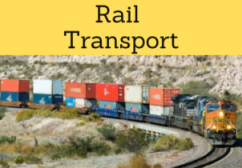
Diplomas: Foreign Trade, International Transport.
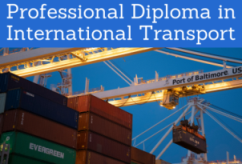
Masters: International Transport, Transport in Africa, International Business, Foreign Trade.
Doctorate: Global Logistics, World Trade.
Languages: 
 Union internationale des Chemins de Fer (UIC) (summary in
Union internationale des Chemins de Fer (UIC) (summary in  Unión Internacional de Ferrocarriles (UIC)
Unión Internacional de Ferrocarriles (UIC)  União Internacional de Caminhos-de-Ferro).
União Internacional de Caminhos-de-Ferro).
Area of Knowledge: Foreign Trade (International Rail Transport Law).
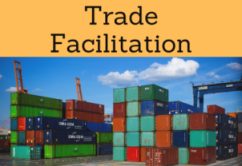
Trade Facilitation - Trade Facilitation Agreement - Kyoto Convention - Convention Harmonization of Frontier Controls of Goods.
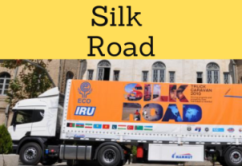
International Union of Railways (UIC).
The International Union of Railways (UIC) represents globally the rail transport sector. One of its main functions is to promote the development of the Rail Transport.
In addition, the International Union of Railways (UIC) harmonizes and improves the conditions of the railway lines as well as the railway operations.
The International Railway Union also promotes the interoperability between the rail systems (concept of International Railway Solution).
The International Union of Railways (UIC) works in the following areas: passengers, cargo, rail system (including infrastructure), wagons, railway operations...
Despite the economic uncertainty, the railway worldwide situation is improving, increasing the market shares in China, India, Australia, South Africa and the U.S. by 40%.
In the U.S. and Russia, the total amount of the goods transported by rail is already above the levels prior to the global crisis.
The development of the Euro-Asian Euro-Asian transport corridors (Trans-Siberian routes, the new Silk Road - Eurasian Land Transport Initiative) is vital for the International Railways Union. They can even be an alternative to the maritime or road transport.
Sample - International Union of Railways (UIC):
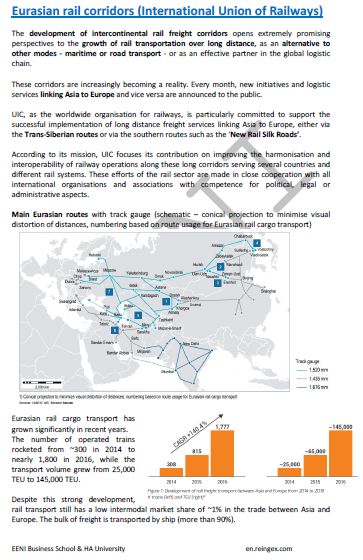
The International Union of Railways (UIC) was created in 1922, its headquarters are in Paris (France).
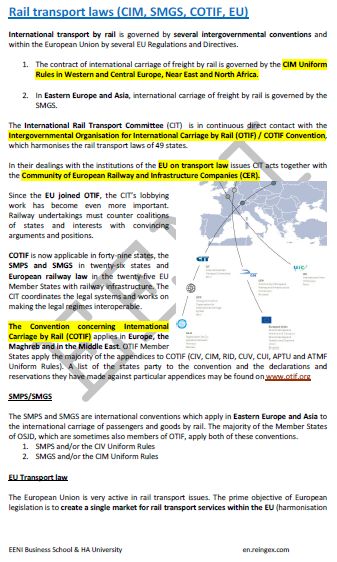
The Intergovernmental Organization for International Carriage by Rail (OTIF) is associated with the International Union of Railways (UIC).
The BIC Code (International Identification Codes of Container Owners) is accepted by the International Union of Railways (UIC)
- Atlantic Corridor
- Baltic-Adriatic Corridor
- North Sea-Baltic Corridor
- North Sea-Mediterranean Corridor
- Pan-European Corridor II
- Pan-European Corridor IX
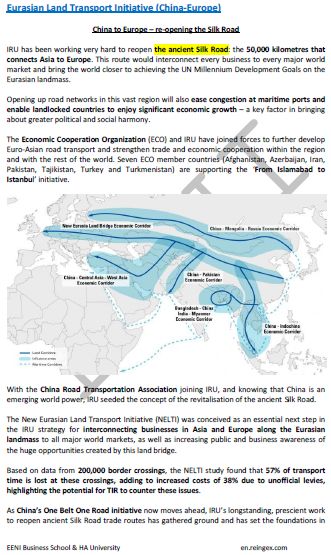
- Almaty-Bishkek Corridor
- Bangladesh-Myanmar Corridor
- China-Russia Corridor
- China-Pakistan Corridor
- China-Central-West Asia Corridor
- India-Afghanistan Corridor
- Europe-Caucasus-Asia Corridor
- Corridor of the Ashgabat Agreement
- Trans-Siberian Railway (Russia, North Korea)
- North-South Corridor (India-Russia)
- Afghanistan-Turkey Corridor
- Trans-Caspian Corridor
- East-West Corridor (Myanmar-Vietnam)
- Kyrgyzstan-Iran Corridor
- Islamabad-Istanbul Corridor
- Nanning-Singapore Corridor
(c) EENI Global Business School (1995-2024)
We do not use cookies
Top of this page



